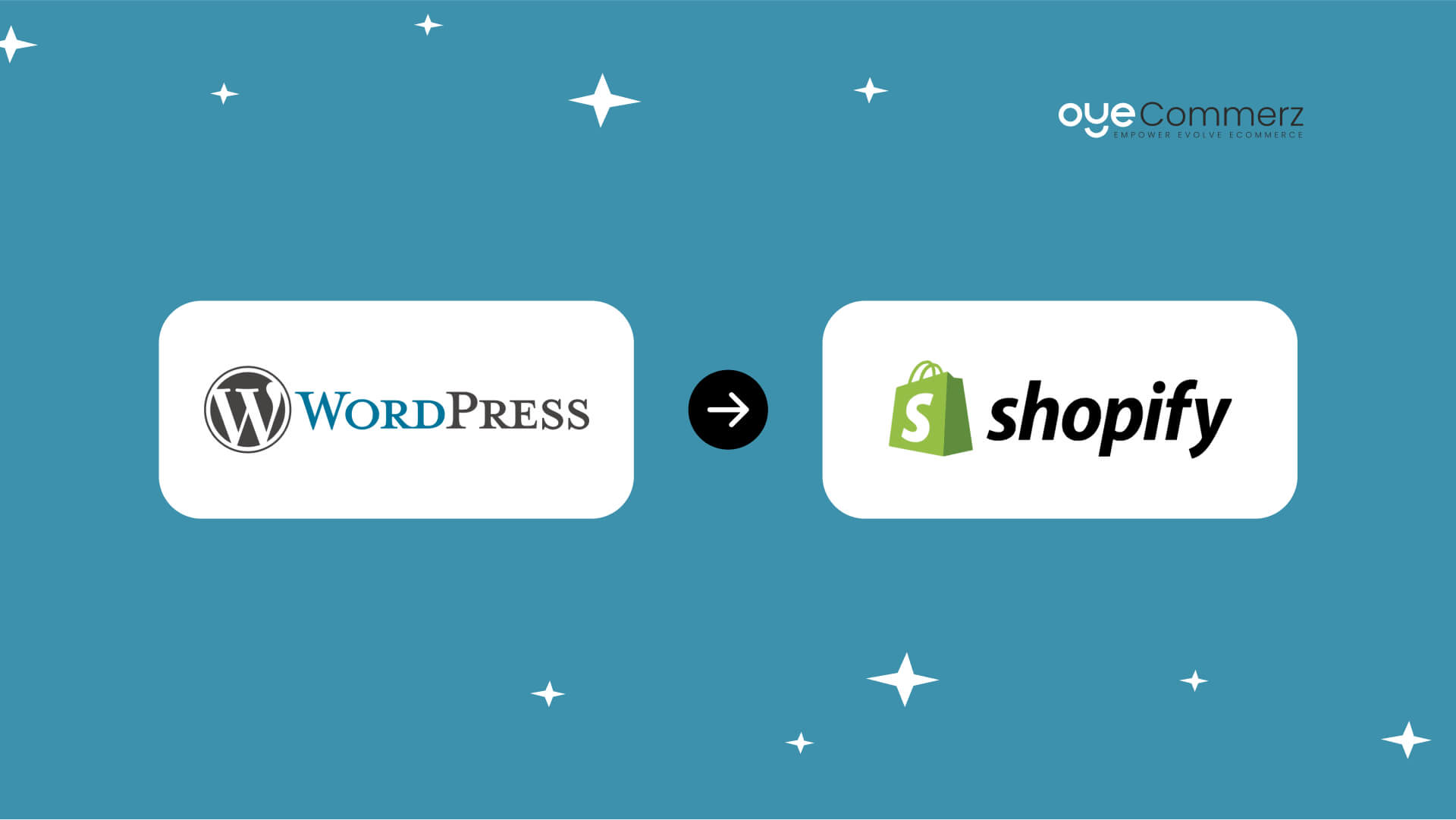Transitioning from WP to Shopify marks an exciting step in optimizing your online store operations. As companies expand, choosing a platform that aligns with scalability, UX, and flexibility becomes crucial. Shopify is widely recognized as a preferred choice for e-commerce professionals, offering unmatched flexibility, data protection, and ease of use. In this guide, we’ll explore why this migration is a game-changer, discuss the benefits, and provide actionable steps to ensure a seamless transition.
1. Why Switch from WordPress to Shopify?
The combination of WordPress and WooCommerce, continues to support countless e-commerce platforms. Nevertheless, as businesses expand, challenges like reliance on plugins, security vulnerabilities, and technical complexities can hinder progress. Shopify, designed explicitly for e-commerce, addresses these issues with an all-in-one, user-friendly platform. Statistics supports this shift—Shopify hosts over 4.4 million websites worldwide, with a reported 10% increase in sales performance for numerous merchants after migration.
2. Shopify's Perks for Thriving Online Stores
Shopify’s powerful platform is tailored for scaling businesses. Its standout features include:
- Seamless Customization: Shopify offers over 80 professionally designed themes.
- Integrated Tools: Features like Shopify Payments and integrated SEO streamline operations.
- International Expansion: Multi-currency support and regional customization empower businesses to expand internationally.
Additionally, Shopify boasts an availability percentage of 99.98%, guaranteeing your store is always operational.
3. Getting Ready for Your WordPress-to-Shopify Transition
Prior to starting the migration process, evaluate your current store. Analyze inventory details, customer details, and SEO performance. Resources such as Shopify’s Migration Kit or third-party solutions can simplify this process. Create a comprehensive plan, ensuring all resources—item details, images, and articles—are optimized for transfer.
4. Shopify migration process The Importance of Accurate Data Migration
Data migration forms the foundation for a smooth transition. When moving from WordPress to Shopify, prioritize:
- Inventory Details: SKU, item summaries, and categories.
- Customer Data: Emails, order history, and preferences.
- Search Engine Considerations: Retain meta tags, URLs, and forwarding paths to maintain search rankings.
Leverage apps like LitExtension to facilitate seamless migration while reducing mistakes.
5. Customizing Your Shopify Store
Post-migration, customizing your Shopify store helps it reflects your business identity. Take advantage of Shopify’s intuitive page builder to create layouts with ease. Shopify's templates are mobile-responsive, ensuring a seamless user experience across devices—a key point, given 74% of e-commerce traffic comes from mobile visitors.
6. How to Protect Your SEO Rankings When Switching Platforms
Search engine optimization is crucial for preserving your online presence during migration. Shopify excels in SEO with organized link formatting, preloaded features, and smooth content management. Ensure:
- Set up URL forwarding for existing links.
- Enhance updated content with targeted phrases.
- Leverage plugins like Plug in SEO to track analytics post-migration.
7. Post-Migration Testing
After finishing the transfer, conduct thorough testing.
Review: - Website speed (Shopify delivers faster speeds Shopify SEO setup in contrast with WP).
- Functionality of payment gateways and checkout processes.
- Adaptability across devices.
Quality assurance guarantees your store provides a smooth shopping journey from the start.
8. Case Study of a Successful Migration
One such migration success story is Gymshark, a fitness apparel brand that moved to Shopify. Post-migration, the company experienced a 60% boost in mobile sales and significantly lowered site downtime. This highlights the potential of Shopify in driving online business success.
9. Challenges and Solutions
Migration comes with challenges, such as information accuracy and reconfiguring custom functionalities. However, Shopify’s robust support and third-party experts simplify the process. Collaborating with experienced Shopify developers ensures a trouble-free transition.
10. Making the Switch: The First Step Toward Success
Migrating from WP to Shopify represents a forward-thinking approach to e-commerce. By addressing scalability, simplifying management, and improving buyer satisfaction, Shopify enables companies to thrive in competitive markets.
Final Thoughts
Transitioning from WordPress to Shopify is a strategic move that can greatly enhance your online business performance. With a robust migration plan, the right tools, and expert support, you can unlock new success milestones.
Excited to start the journey? Let’s discuss how our Shopify migration services can revolutionize your e-commerce platform. Contact us now, or ask yourself: Can your business afford to miss out on Shopify’s growth potential?
